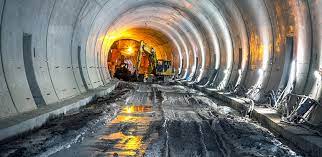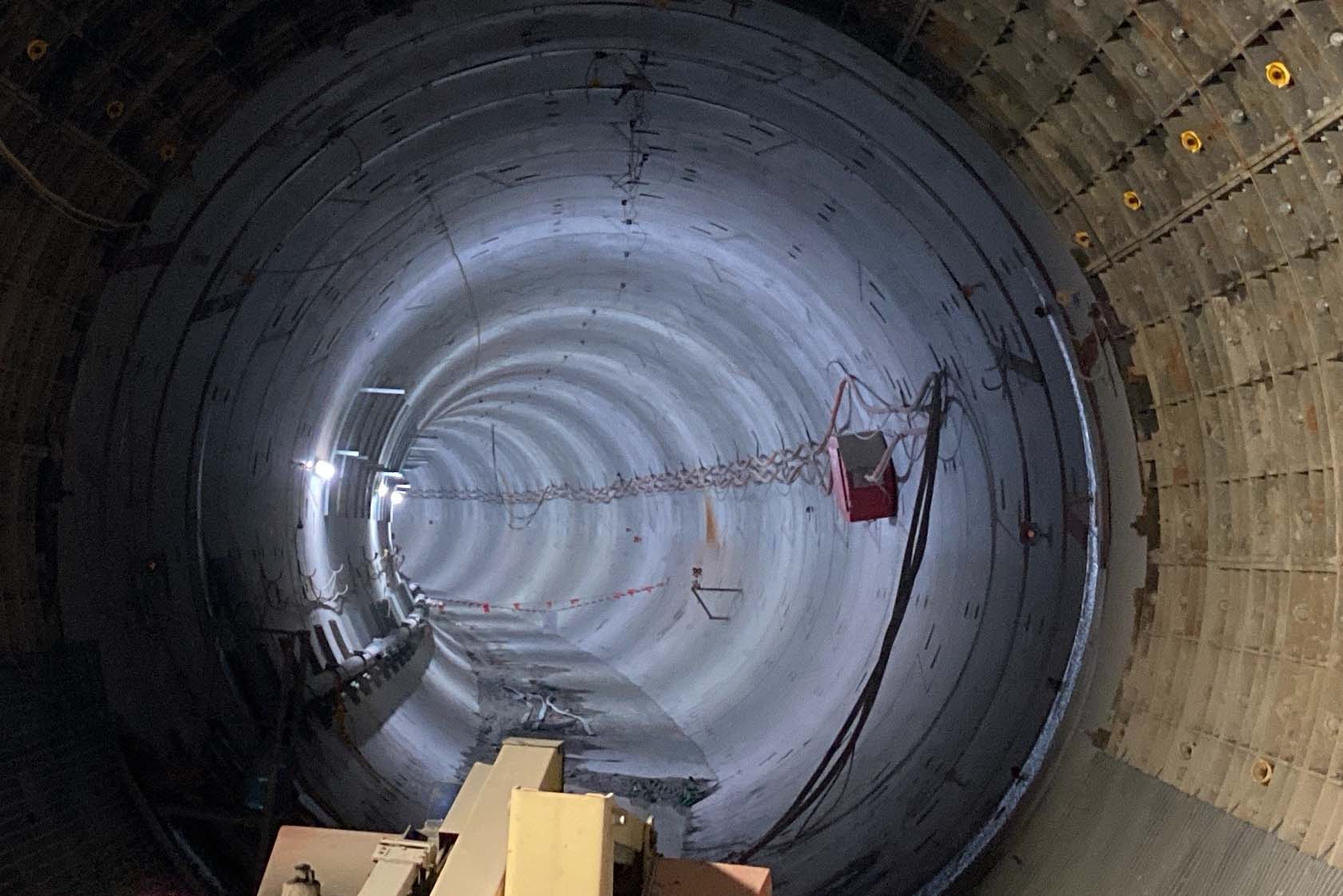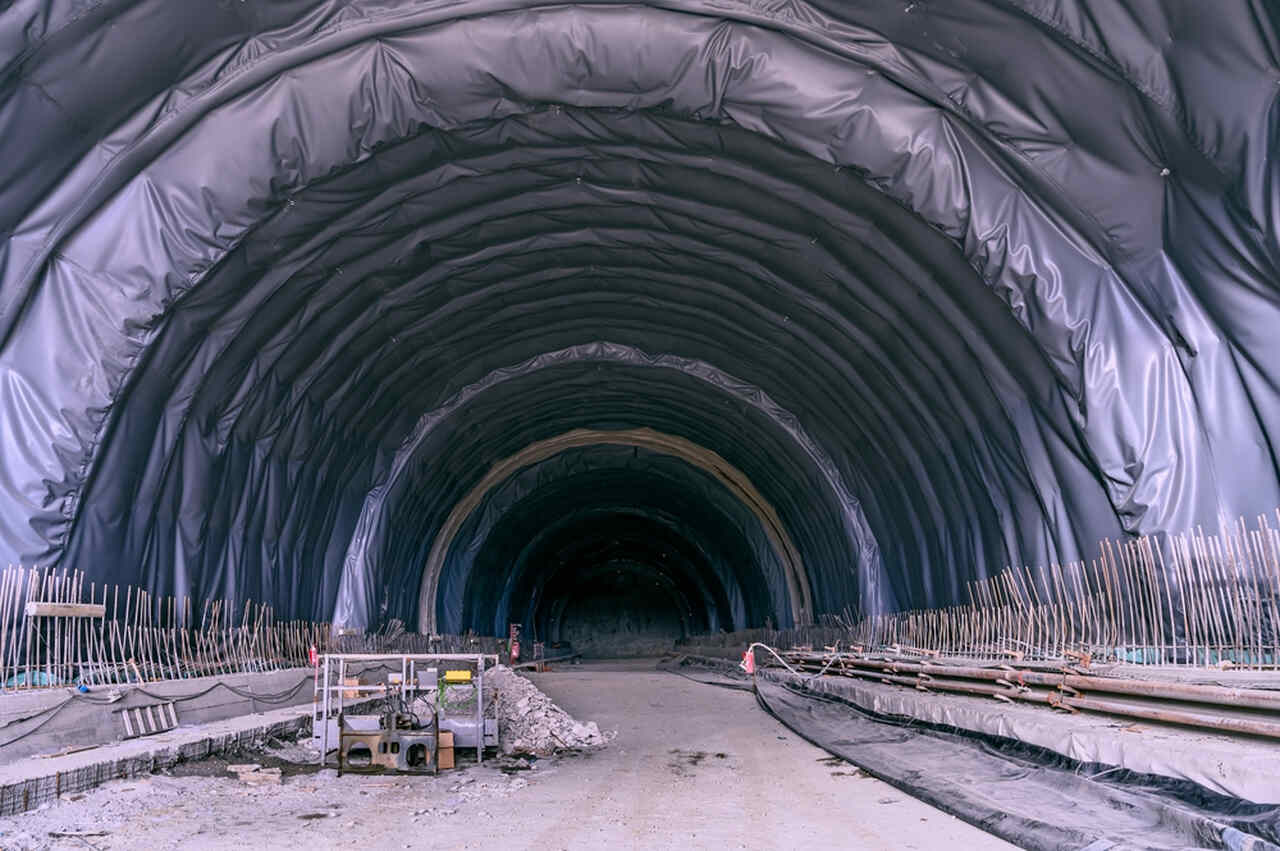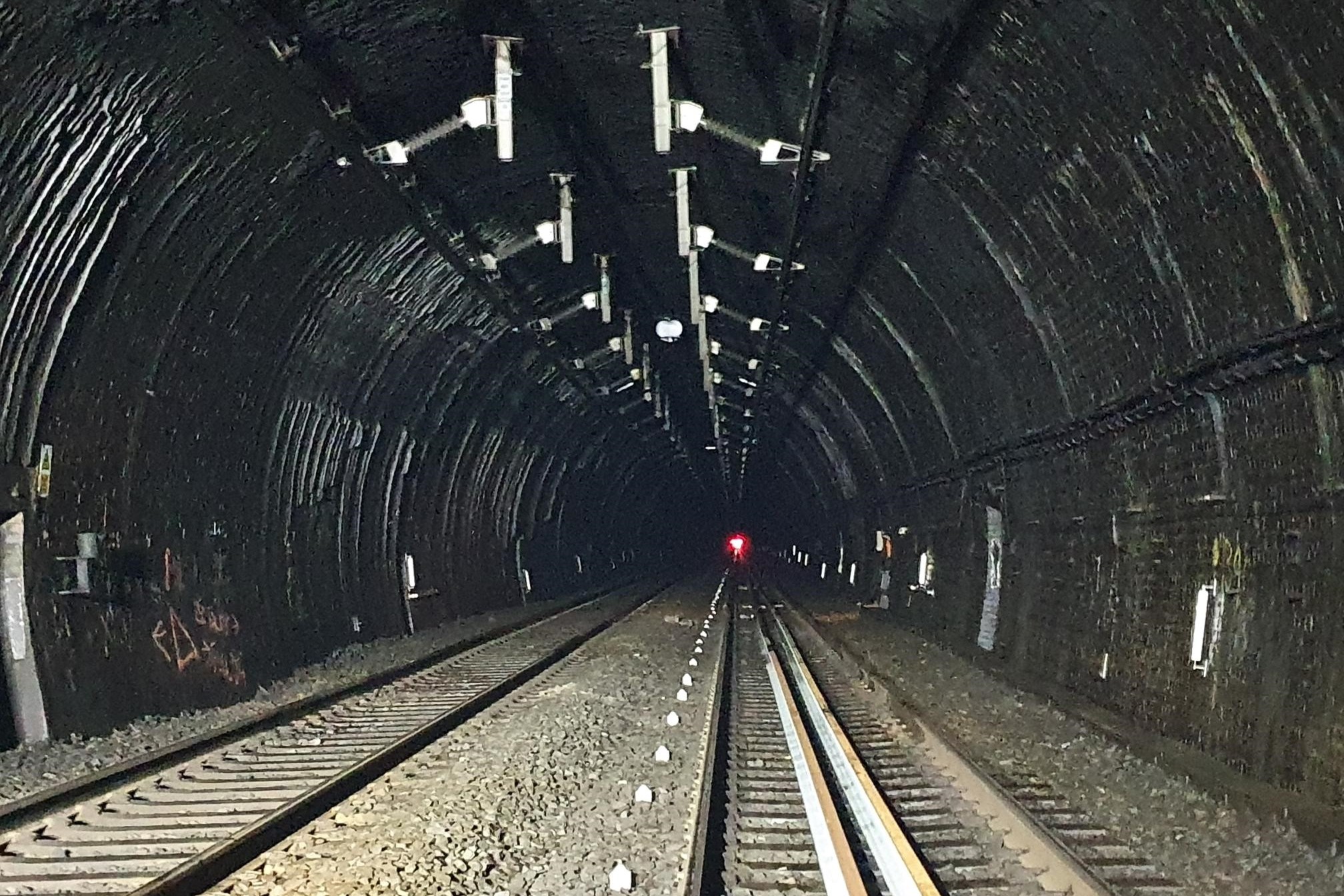Tunnels play a crucial role in shaping the modern world; from transportation networks to utility infrastructure, they create pathways. It was estimated that in 2019, 1,615 tunnel projects were under construction worldwide, with almost 5,200 kilometers of tunnels built each year. Projects such as these are fraught with complex challenges that project stakeholders and engineers must address and overcome.
A primary hurdle that engineers face before and during tunnel construction is geological variability. The Earth’s subsurface can be complex, with the soil and rock composition varying drastically in certain spaces. This requires constant adjustments to techniques and methods. Groundwater poses particular challenges. Before starting the project, project stakeholders must clearly identify areas containing groundwater in permeable strata and the presence of faults, joints, and fissures that can promote flow and lead to potential flooding. Once areas are identified, the correct procedure must be in place to safeguard tunnel construction and implement effective long-term waterproofing and/or drainage systems. Care needs to be taken to ensure that water inflow does not adversely affect surrounding assets built on compressible materials.
During the construction phase of tunnels, there are numerous moving parts that need to all come together in a cyclic and repeatable process to build it efficiently. Limited access and space produce challenging logistics for machinery, equipment, and workers. Managing all this in tight spaces can be tricky and may result in safety concerns and project delays if the right processes and planning are not in place.
Today, there is a lot of emphasis on ensuring sustainable practices in construction. Thus, balancing construction needs with environmental preservation is of the utmost importance. Project engineers must ensure that the impact on the ecosystem and groundwater sources is minimum, and doesn’t have any long lasting effects in the surrounding areas.
Despite the challenges that are constantly faced in tunneling projects, engineers can effectively and safely build tunnels, overcoming the challenges mentioned through the use of the right tools and software.
1. Geotechnical Investigatio
Before any tunneling work can begin, it’s important to conduct a geotechnical investigation. This involves studying the soil and rock conditions of the site to determine the best tunnelling methods. A geotechnical investigation will help identify any potential hazards or risks that could affect the safety of the tunnelling operation. It’s important to conduct this investigation early on in the planning process, as it will inform the design and construction of the tunnel.
2. Tunnel Boring Machines
Tunnel Boring Machines (TBMs) are one of the most common tools used in tunnelling. These machines are specifically designed to bore through rock and soil, creating tunnels quickly and efficiently. TBMs can be used in a variety of ground conditions, including hard rock and soft soil. There are different types of TBMs available, each with its own advantages and disadvantages. For example, a shielded TBM is best suited for soft ground conditions, while an open-face TBM is better for hard rock
3. Ground Improvement Techniques
Ground improvement techniques can be used to improve the soil and rock conditions before tunneling begins. This can include methods such as grouting, soil stabilization, and rock bolting. These techniques can help to increase the stability of the ground, reduce the risk of collapse, and improve the overall safety of the tunnelling operation.
4. Monitoring Systems
Monitoring systems are an essential tool for tunnelling success. These systems can be used to monitor the ground conditions, as well as the progress of the tunnelling operation. They can alert the construction team to any potential hazards or risks, allowing them to take action before any damage occurs. Monitoring systems can include sensors, cameras, and other technology that can provide real-time data about the tunnelling operation.
5. Safety Procedures
Safety procedures are critical for tunnelling success. Tunnelling can be a dangerous operation, and it’s important to have strict safety protocols in place. This can include things like regular safety meetings, the use of personal protective equipment, and the implementation of emergency response plans. Safety procedures should be followed at all times to ensure the safety of everyone involved in the tunnelling operation
Overall, the tools and techniques for tunnelling success are diverse and complex. It’s important to choose the right tools and techniques for the specific project, taking into account the ground conditions, budget, and time constraints. By using a combination of geotechnical investigation, tunnel boring machines, ground improvement techniques, monitoring systems, and safety procedures, tunnelling can be a safe and successful operation.







